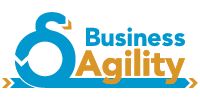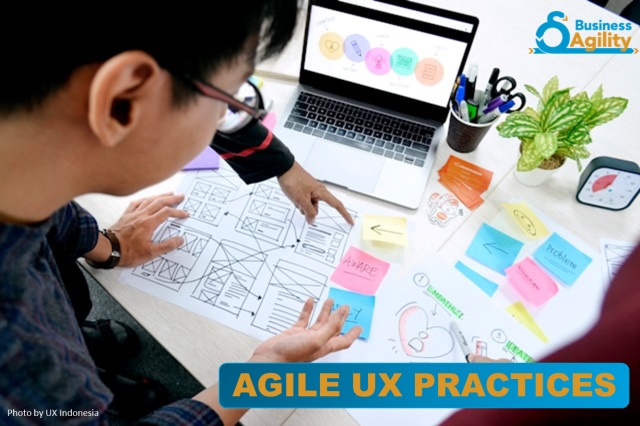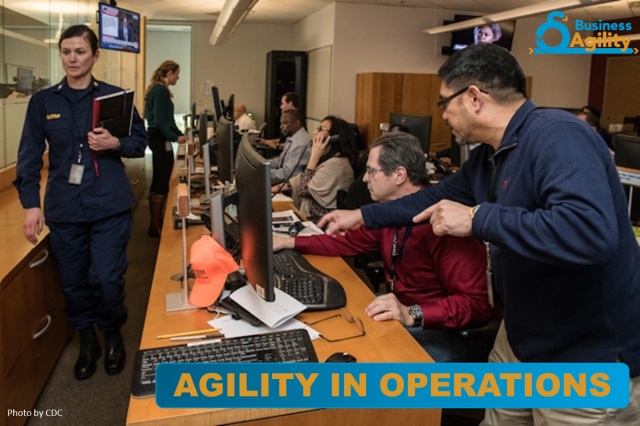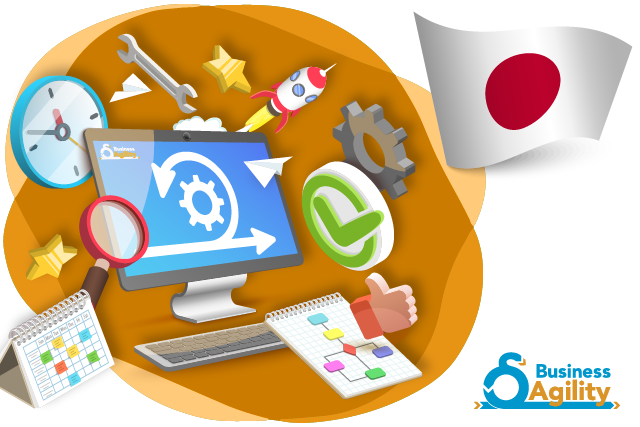The integration of ExtrAgility into UX and Agile frameworks signifies a paradigm shift toward more responsible and conscious design. It challenges UX professionals to leverage their skills in service of not just business objectives and user satisfaction, but also the greater good, aligning product development with the urgent need for sustainable and ethical innovation. This approach not only enhances the user experience but also builds trust, loyalty, and a strong sense of community among users, fostering a more sustainable, equitable, and inclusive digital future.
User Experience (UX) encompasses a broad range of concepts and practices focused on optimizing the overall experience of users when interacting with products, systems, or services. In the context of business, UX is pivotal as it directly influences customer satisfaction, engagement, loyalty, and conversion rates. Below is a list of various facets of UX and their significance for businesses:
- Usability: Refers to how easy and intuitive a product or system is to use. Improving usability can significantly reduce user frustration and increase productivity, which is essential for software, websites, and various digital and physical products.
- Accessibility: Involves designing products or services that are usable by people with a wide range of abilities and disabilities. This includes users with visual, motor, auditory, speech, or cognitive disabilities. Accessibility can expand market reach and is also a legal requirement in many jurisdictions.
- Interaction Design (IxD): Focuses on creating engaging interfaces with well-thought-out behaviors. Understanding how users and technology communicate with each other is crucial for creating products that are easy, efficient, and enjoyable to use.
- Information Architecture (IA): The art and science of structuring and organizing information in products and services to support usability and findability. In business, good IA helps users find information without effort, improving the overall experience.
- User Research: Encompasses a variety of investigative activities to add context and insight into the process of designing for user experiences. It helps businesses understand the needs, behaviors, and motivations of their users, leading to more informed decisions and user-centered designs.
- Visual Design: The look and feel of the user interface. Visual design has a significant impact on a user’s experience and includes the choice of colors, typography, and images. It plays a key role in branding and creating emotional connections with users.
- Content Strategy: Involves planning, creating, delivering, and governing content. Content not only includes the words on the page but also the images and multimedia that are used. Ensuring that content is relevant, engaging, and accessible to users enhances the UX and can drive key business outcomes.
- User Interface (UI) Design: Closely related to visual design and interaction design, UI design is about selecting the right interface elements, like buttons, icons, and sliders, for the task the user is trying to accomplish. It is crucial for making the user’s interaction as simple and efficient as possible.
- Prototyping and Wireframing: These are key activities in the UX design process. They allow designers to explore ideas and iterate on them quickly before finalizing the design. This iterative process helps save time and money by identifying issues early on.
- Analytics and User Feedback: Quantitative and qualitative data gathered from users provides insights into their behaviors and preferences. Businesses can use this data to make informed decisions about product improvements.
- Emotional Design: Aims to create products that elicit appropriate emotions in order to create a positive experience for the user. This aspect of UX design can lead to more engaging and memorable user experiences.
For businesses, investing in UX means not only ensuring that their products or services meet the functional needs of their users but also creating delightful experiences that foster loyalty and advocacy. This holistic approach to UX can lead to higher customer satisfaction, increased usage, and ultimately, greater business success.
Thematic Agile UX Practices
Implementing Agile practices tailored to UX roles can significantly enhance the integration of UX design within Agile processes. These practices, when classified by themes, facilitate a more cohesive and efficient approach to creating user-centered products. Here’s a list of Agile practices beneficial to UX job roles, classified by themes:
User Research and Empathy
- Empathy Mapping Sessions: Conducting regular sessions to create empathy maps, helping UX teams to better understand users’ needs, experiences, thoughts, and feelings, fostering a deeper connection with the user base.
- User Diaries: Encouraging users to keep diaries of their interactions with the product over time. This practice provides insights into the user’s daily experiences, challenges, and moments of delight.
- Participatory Design: Involving users directly in the design process through workshops or co-creation sessions, ensuring that products are developed with a clear understanding of user needs and preferences.
Collaboration and Co-creation
- Cross-functional Collaboration Workshops: Organizing workshops where UX designers, developers, product managers, and other stakeholders work together on design challenges, promoting understanding and collaboration across disciplines.
- Design Studio Method: Implementing collaborative design sessions that involve rapid sketching, prototyping, and feedback cycles with team members and stakeholders, fostering creativity and iterative improvement.
Iteration and Feedback
- Iterative Design Sprints: Conducting short, focused sprints dedicated to UX design, where ideas are rapidly prototyped, tested, and iterated based on user feedback.
- Continuous Usability Testing: Setting up regular intervals for usability testing throughout the development cycle, allowing for ongoing feedback and iterative design enhancements.
Communication and Documentation
- Living Style Guides: Creating and maintaining dynamic style guides that evolve with the product, ensuring consistency in the user interface while allowing flexibility for growth and change.
- UX Documentation Repositories: Developing centralized repositories for UX research, personas, journey maps, and design patterns, accessible to all team members for reference and inspiration.
Learning and Improvement
- Reflective Design Reviews: Holding regular sessions where the team reflects on the design process, outcomes, and user feedback, discussing what worked, what didn’t, and how to improve in future iterations.
- UX Learning Circles: Establishing peer-led groups for sharing knowledge, skills, and experiences in UX design, encouraging continuous learning and professional growth within the team.
Engagement and Validation
- User Feedback Loops: Integrating mechanisms for collecting and analyzing user feedback directly within the product, ensuring that users can easily share their experiences and suggestions.
- A/B Testing with Qualitative Feedback: Beyond quantitative A/B testing, incorporating methods for gathering qualitative feedback on different design variations to understand the reasons behind user preferences.
By integrating these Agile practices into their workflows, UX teams can ensure that their efforts are aligned with Agile cycles, leading to products that not only meet user needs but are also delivered efficiently and effectively. This approach promotes a dynamic, collaborative, and user-focused environment where continuous learning and improvement are part of the culture.
Transposing Agile Customer-Centricity Manifesto on Agile UX
Transforming the Agile Manifesto into an Agile UX Manifesto involves integrating UX principles with agile development’s flexibility, speed, and iterative nature. This adaptation ensures that UX roles and practices are not just an add-on but are seamlessly incorporated into the agile process, focusing on user-centered design, continuous improvement, and collaboration. Here’s how the values and principles outlined can be applied specifically to Agile UX, reflecting the roles and responsibilities discussed:
Agile UX Values
- People-Centric, Human Interactions:
- Prioritize direct engagement and empathy with users to inform design decisions, valuing diverse perspectives and inclusivity in user research and testing.
- Customer-Centric, Value-Focus, Reducing Waste:
- Focus on understanding and meeting real user needs, ensuring that every design decision contributes to creating value for the customer, thereby minimizing efforts spent on features or functions that do not enhance the user experience.
- Collaborative, Inclusive, Iterative, Feedback:
- Engage cross-functional teams (including UX Designers, UI Designers, Content Strategists, and Developers) in continuous collaboration, ensuring frequent user feedback is integrated into design iterations for shared ownership of the product.
- Flexibility, Responding to Change:
- Adapt designs based on evolving user needs and feedback, maintaining the agility to pivot or refine UX strategies in response to new insights or market changes.
- Autonomy, Objectivity, Continuous Learning:
- Empower UX teams to experiment and learn from both successes and failures, using data-driven insights to guide design improvements and innovations.
- Culture, Psychological Safety, Social Responsibility:
- Foster a transparent and trustful environment that respects user privacy and promotes ethical design practices, ensuring decisions are made with consideration for their impact on users and society.
Agile UX Principles
- Customer Satisfaction is based on Value:
- Prioritize designs and features that directly enhance user satisfaction and deliver tangible value.
- Embrace Customer Change Requests:
- View changes in user needs and feedback as opportunities to improve and refine the product.
- Deliver Working Solutions ASAP:
- Focus on rapid prototyping and iterative design to quickly test ideas and get user feedback.
- Dialogue and Listen to Customers Every Day or as often as you can:
- Maintain open channels for user feedback, incorporating user insights into the design process regularly.
- Customers Deserve to Deal with Trustworthy and Motivated Employees:
- Ensure UX team members are engaged, empathetic, and committed to ethical design practices.
- Customers prefer to ‘Put a Face to the Name’:
- Personalize user research and testing to understand the human behind the data, fostering a deeper connection and empathy.
- Solving the Real Customer Problem is the primary measure of progress:
- Measure success by the ability to address actual user problems and needs effectively.
- No one is Superhuman, maintain a sustainable and constant pace:
- Support a work environment that promotes well-being and sustainability, avoiding burnout.
- Continuous attention to technical excellence and Customer Experience (CX):
- Strive for high-quality implementations that enhance the user experience, prioritizing usability and accessibility.
- Less is more — Focus on the outcome not on the output:
- Concentrate efforts on what truly matters for the user, ensuring simplicity and clarity in design.
- Let Teams Decide their Way of Working to Delight the Customers:
- Encourage autonomy and creativity within UX teams, allowing them to innovate ways to engage and delight users.
- We all Learn to be Better Together:
- Promote a culture of continuous learning and improvement, valuing collective growth and knowledge sharing.
Adapting these values and principles into the Agile UX process ensures that user experience design is not only about making products usable, accessible, and delightful but also about aligning closely with agile methodologies to deliver value quickly, responsively, and efficiently.
Agile UX Frameworks
Scrum and Kanban are two popular Agile methodologies that offer different approaches to project management and can be particularly beneficial for various UX job roles depending on the nature of the project, team dynamics, and specific goals. Understanding the characteristics and requirements of each role can help determine which methodology is more suitable.
Scrum
Scrum is well-suited for projects that have a defined scope and where work can be divided into sprints of fixed duration. It is ideal for roles that benefit from structured phases of work and frequent reassessment of priorities.
Roles Suited for Scrum:
- UX Designer: Involved in designing the overall functionality of the product, UX Designers can benefit from Scrum’s iterative approach, which allows for regular feedback and revisions based on sprint reviews.
- Product Designer: Focusing on both the usability and the aesthetics of a product, Product Designers can leverage Scrum’s sprint cycles to prototype, test, and iterate designs continuously.
- UX Researcher: Scrum provides a framework for UX Researchers to plan and execute research activities in alignment with the development sprints, ensuring that insights are timely and can inform the upcoming sprint’s design decisions.
Decision Criteria for Scrum:
- Projects with clear objectives and deliverables that can be achieved incrementally.
- When regular, structured feedback sessions are essential for refining and iterating on designs.
- Teams that benefit from defined roles and responsibilities within a structured framework.
Kanban
Kanban is suited for environments where work items vary significantly in size and priority, and there’s a need for continuous delivery. It’s ideal for roles that require flexibility and where work cannot easily be segmented into sprints.
Roles Suited for Kanban:
- Content Strategist: Given the ongoing nature of content development and optimization, Content Strategists can use Kanban to manage a continuous workflow, prioritizing tasks based on current needs.
- Accessibility Specialist: Accessibility improvements can often be made incrementally and may need to be prioritized based on immediate issues or regulatory requirements. Kanban allows for this continuous prioritization and implementation.
- UI Designer: While UI Designers can work in sprints, Kanban’s flexibility is beneficial for ongoing design tasks like tweaking user interfaces based on user feedback or A/B testing results.
Decision Criteria for Kanban:
- Projects that require continuous delivery and where tasks vary widely in scope and urgency.
- When the team needs the flexibility to reprioritize work quickly based on changing needs or feedback.
- Ideal for support and maintenance projects or when work items cannot be easily batched into sprints.
Examples
- A UX Designer in a Scrum team might work on a new feature’s user flow and wireframes in one sprint, test prototypes in the next, and refine the design in a subsequent sprint based on user feedback.
- A Content Strategist using Kanban might continuously adjust their priorities based on website analytics and user feedback, focusing on updating high-traffic pages before creating new content.
In conclusion, Scrum or Kanban is based on the project, the type of tasks involved, and the team’s working style. Scrum’s structured approach is beneficial for projects with clear phases and deliverables, making it suitable for roles involved in the design and research phases. Kanban’s flexibility is ideal for roles that deal with ongoing tasks and require the ability to quickly reprioritize work based on evolving needs.
ExtrAgility in User Experience (UX)
UX ExtrAgility represents an advanced approach to integrating broader societal and environmental considerations into Agile practices and UX roles. This approach can significantly enhance how UX professionals contribute to product development, ensuring that outcomes are not only user-centered but also socially responsible and sustainable. Here’s how ExtrAgility can enhance UX job roles and the overall user experience:
Integrating ExtrAgility into UX Job Roles
- UX Designers and Product Designers: By adopting an ExtrAgility approach, these professionals can ensure that their designs not only meet user needs but also contribute positively to societal well-being and environmental sustainability. For example, they could focus on designing products that are accessible to all user groups, including those with disabilities, or that encourage sustainable user behaviors.
- UX Researchers: ExtrAgility empowers UX Researchers to incorporate broader ethical considerations into their research methodologies and to explore how users’ values around sustainability and social responsibility influence their interaction with products. This might involve conducting research to understand how eco-friendly practices can be integrated into user experiences or how products can better serve underrepresented communities.
- Content Strategists: With a focus on CSR and SDGs, Content Strategists can develop content that not only engages users but also educates them about sustainability and social responsibility issues. This could involve creating content strategies that highlight a company’s commitment to ESG principles or that encourage users to participate in sustainable practices.
- Accessibility Specialists: ExtrAgility emphasizes the importance of creating inclusive products that are accessible to everyone, including people with disabilities. This aligns with SDGs focused on reducing inequalities. Accessibility Specialists can use this approach to advocate for and implement design practices that ensure all users can equally benefit from products and services.
- UI Designers: UI Designers can leverage ExtrAgility to create interfaces that not only provide an excellent user experience but also promote sustainable and ethical behaviors. For instance, integrating features that encourage users to make eco-friendly choices or designing with sustainability in mind by reducing energy consumption patterns of digital products.
Enhancing User Experience through ExtrAgility
- Promoting Ethical Engagement: Products designed with ExtrAgility principles in mind encourage users to engage with platforms and services more ethically, fostering a sense of community and shared responsibility towards global challenges.
- Building Trust and Loyalty: By transparently integrating CSR, SDGs, and ESG principles into products, companies can build deeper trust with their users, enhancing brand loyalty and user satisfaction.
- Encouraging Sustainable Behaviors: Designing with an emphasis on sustainability can influence user behavior, encouraging more eco-friendly interactions with technology and promoting a more sustainable lifestyle.
- Improving Accessibility and Inclusivity: A focus on inclusivity and accessibility ensures that products are usable by a broader audience, enhancing the user experience for all and supporting global goals of reducing inequalities.
- Innovating for Social Good: ExtrAgility encourages UX professionals to think creatively about how their work can contribute to social good, leading to innovative solutions that address pressing global issues.
Incorporating ExtrAgility into UX roles and practices enables professionals to design products that are not only user-centered but also ethically grounded and sustainability-focused. This holistic approach ensures that the digital products and services of the future contribute positively to society and the environment, aligning business success with broader societal goals.
Photo by UX Indonesia






